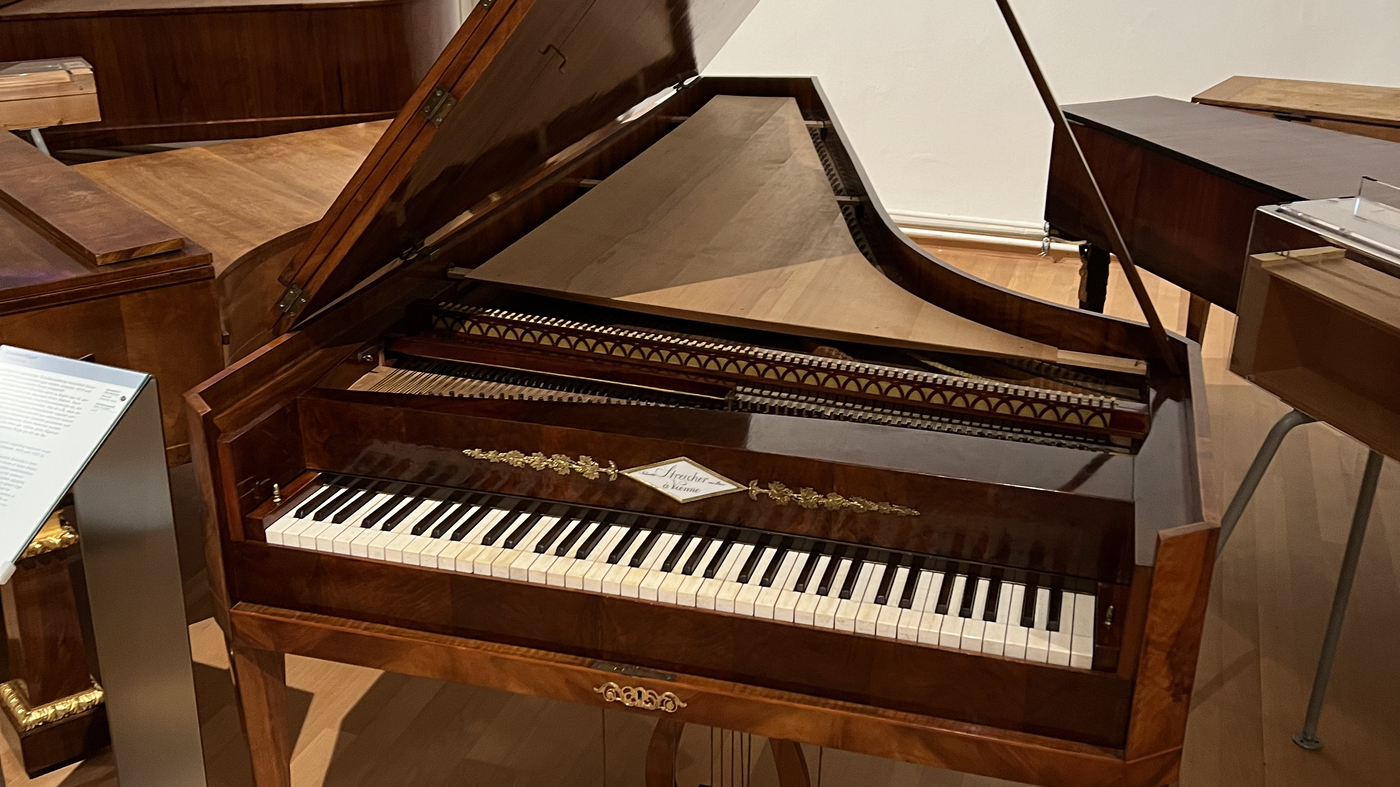
I remember in middle school, everybody and their brother seemed to be playing piano. While I heard my fair share of complaints from my classmates about their lessons, it never dissuaded me from wanting to learn. My earliest memories of playing piano were in 4th grade when I downloaded a piano app onto my iPad. This particular system had an inbuilt teaching mechanism and could play a song on the virtual piano by lighting up the key corresponding to each note. However, no app is perfect: all 88 keys couldn’t fit on the screen, resulting in me having to scroll from one end of the piano to the other. I attempted to learn Adele’s “Set Fire to the Rain,” but ultimately gave up due to the obvious difficulty of playing on an iPad. Instead, I took up singing.
During my private lessons, I would sometimes have to look over my teacher’s shoulder at the lyrics on the sheet music as she played, but rather than focusing on the words, I’d watch her hands glide over the piano. I was in awe of how she not only played different melodies and rhythms on each hand, but also how she was able to swiftly move from one end of the piano to another without missing a beat or pressing a wrong key. However, when I tried doing the same, and this time on a real piano, it never worked. Instead of a perfect melody like my teacher, I would haphazardly string together a line filled with wrong notes that honestly sounded like a four-year-old whacking some pots and pans.
But this summer, I was determined to succeed! Over winter break, I bought a piano, but it just collected dust in my garage throughout the spring semester. Finally, at the start of summer break, my dad and I cleaned off the cobwebs, opened and assembled it, and I was ready to begin. I didn’t know exactly where to start, but as the overeager person that I am, I thought I could simply skip over learning how to read music and get right to playing.
Now you might be thinking, how does one do this? Well, I searched YouTube videos of the songs I wanted to learn that showed someone playing the song. I watched them, carefully observing which keys the pianist was pressing, thinking that I could simply memorize the song. Turns out, this is an extremely inefficient method of learning to play. I spent hours squinting at my screen, replaying the same eight seconds of the video, and trying to decipher the key-by-key breakdown of the melody.
After a few days of this, I realized that this wasn’t working and that taking the time to learn to read music would definitely be worth the while. So off I went and ordered a book which walked me through the basics of piano playing: which key is played with which finger, exercises to train myself to play different melodies on each hand, and most importantly how to read music!
It was fascinating to understand how each space and line on the sheet music corresponded with a specific note and furthermore, how the note could change slightly if there was a flat or sharp symbol next to it. I learned how to count out different time signatures, the pattern of beats, and the number of notes in a measure. Slowly, the dots and stems on pages of sheet music started to unfold into a language I could understand.
From there, I moved on to playing full-length songs. At first, though, even simple ones were hard to play as making sure I was playing the correct notes while keeping rhythm is no easy task. Since I wasn’t familiar with where each key was, my eyes would dart from the sheet music down to the piano and back up to the sheet music. I remember the long pauses between notes as I would mumble to myself,
“Is that an F or a G? Wait no! It’s neither, that’s definitely an A…or is it?”
All this frantic eye darting, head snapping, and mumbling sure did get me some strange looks from my parents. From their amused expressions, I could almost hear them thinking,
“What on earth is she playing?!”
Over the summer months, I did get better though. I remember the first time I played “When the Saints Go Marching In” without looking down, I was overjoyed! As I developed my skills, my confidence grew but I wanted a way to test myself and make sure that I was playing correctly. I pulled out some old sheet music from my high school singing groups and attempted to play the melody. Since I knew the song, I would know if I played it wrong.
Needless to say, I stumbled a bit. It wasn’t smooth sailing but I’m so proud to say that I was mostly able to play through the melodies of “Come to Your Senses” from “Tick, Tick…Boom,” “Come Ready and See Me” by Richard Hundley, and “All Too Soon,” a traditional Celtic tune by Stephen Hatfield.
While I’m not yet a pro at playing piano, I’ve definitely come a long way this summer and I’m so excited to continue expanding my skills. Now what that is going to do to my poor parents when I go back home over winter break is a story for another time!
Sabrina Ladiwala can be reached at sladiwala@wesleyan.edu.


Leave a Reply